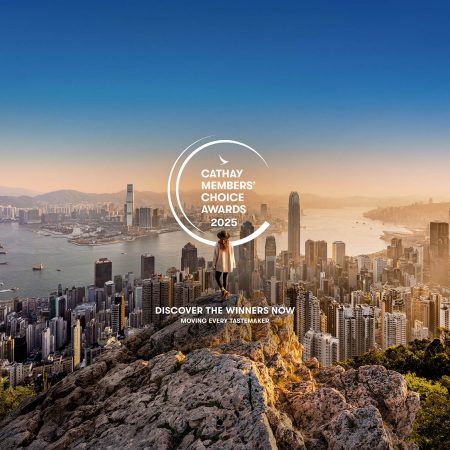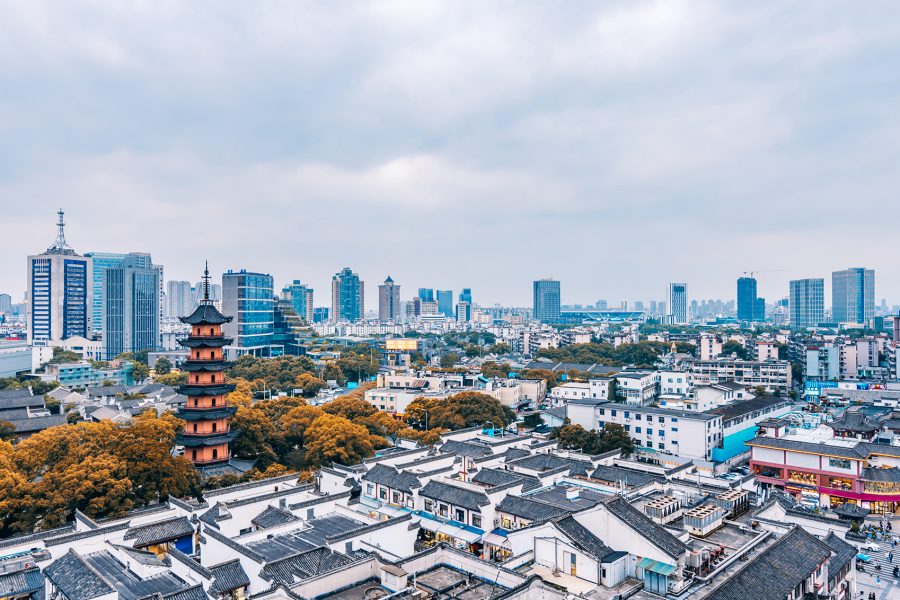Name the first cities that come to mind when you think of the Eastern region of the Chinese Mainland. Shanghai is probably first on your list. Nanjing might be up there, and perhaps Hangzhou and Suzhou, too. None of these, however, was the historical starting point of the Silk Road of the Sea.
That honour goes to Ningbo. For over 2,000 years, Ningbo was a major entrepôt, the dominant port city on the East China Sea. Arab and Jewish merchants were based in the city as far back as the Song dynasty (960-1279). There was a sizeable Portuguese settlement briefly in the 1500s, before they were forced out for pirate raids on ships. And for long stretches of history, it was also the only Chinese port officially open to Korea and Japan, a gateway transmitting goods and cultural riches between the countries.
Today, however, it’s frequently overlooked in favour of its neighbours. While it doesn’t have the glitz of Shanghai, nor the poetry-inspiring landmarks of Hangzhou, the city still has its own host of landscapes, culture, and experiences that are well worth exploring.
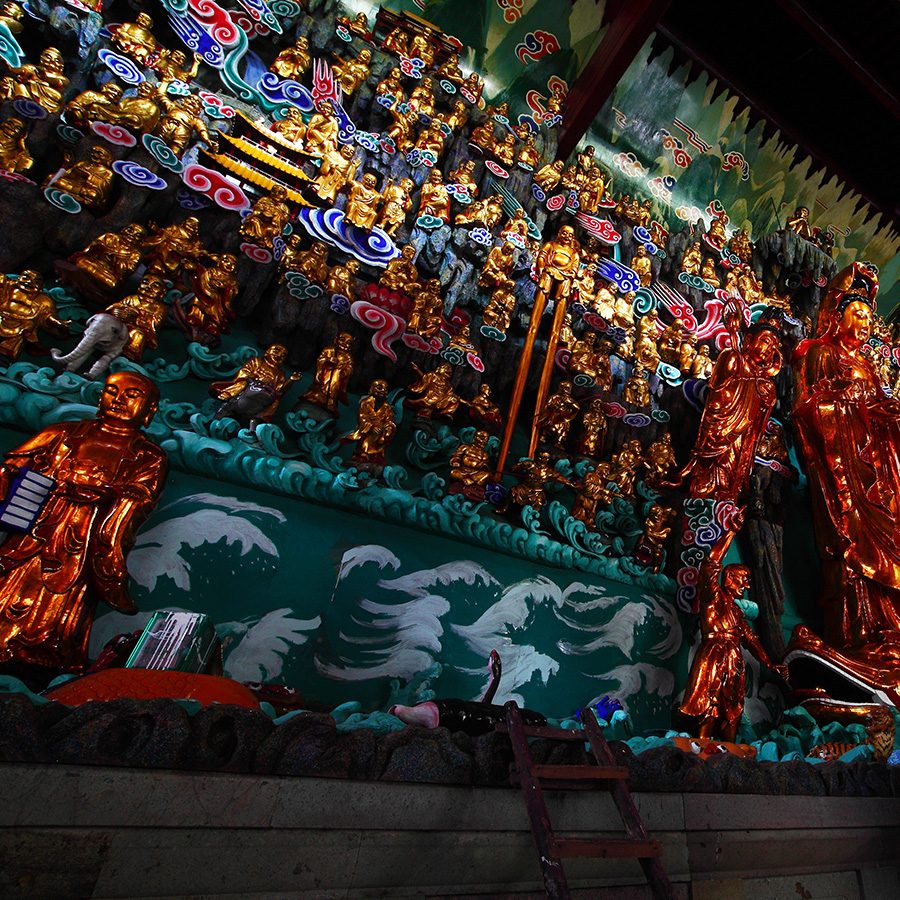
Credit: xiao zhou/Getty Images
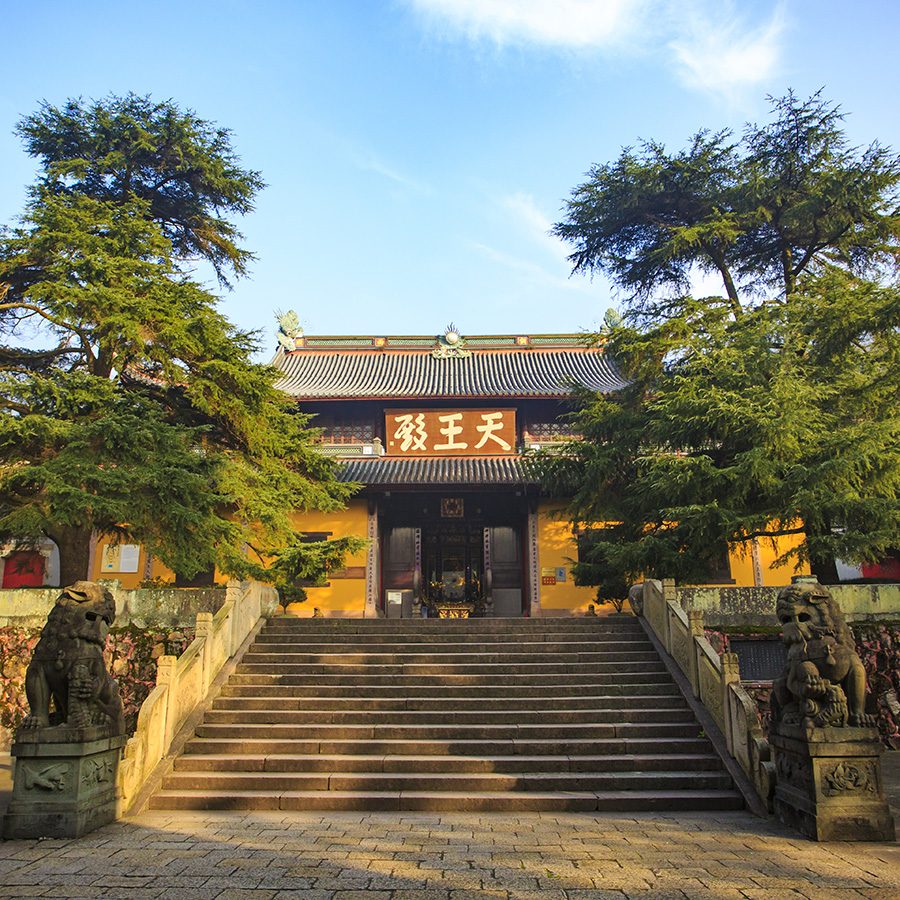
Credit: Viewstock/Getty Images
Zen in the city
For starters, it must be the calmest major city in Eastern China. That may sound strange for a place with 9.6 million people, one that still boasts one of the busiest ports in the world and is an increasingly important part of the development triangle that spans Hangzhou Bay. Yet somehow, there’s a certain peace that pervades Ningbo.
Maybe it’s because of its legacy as a centre of Zen Buddhism during the Tang dynasty (618-907), kept alive by the temples that still dot the surrounding mountains today. One of the largest and oldest is Tiantong Temple , established in 300 AD and considered the cradle of the Soto sect of Japanese Zen. The surrounding bamboo forest forms a popular hiking area.
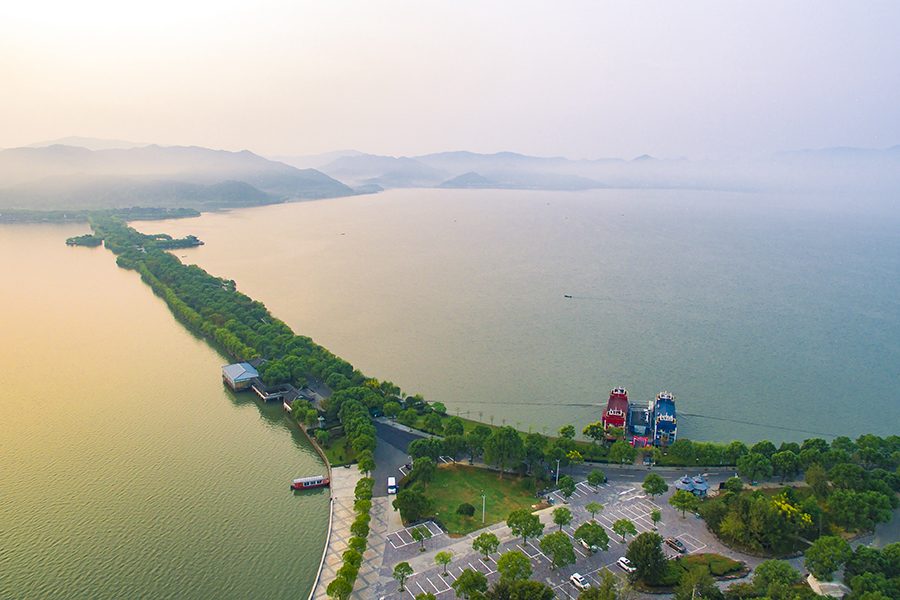
Credit: ViewStock/Getty Images
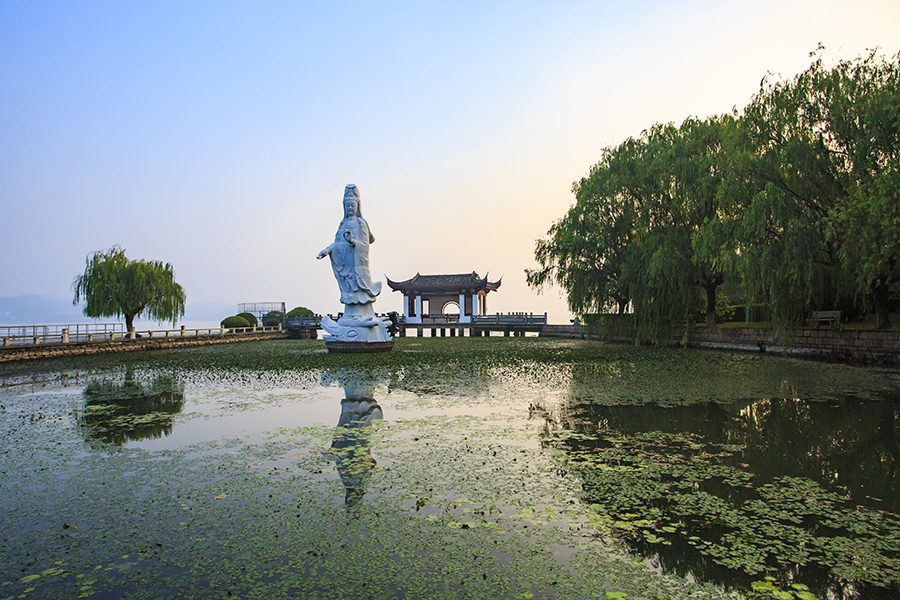
Credit: ViewStock/Getty Images
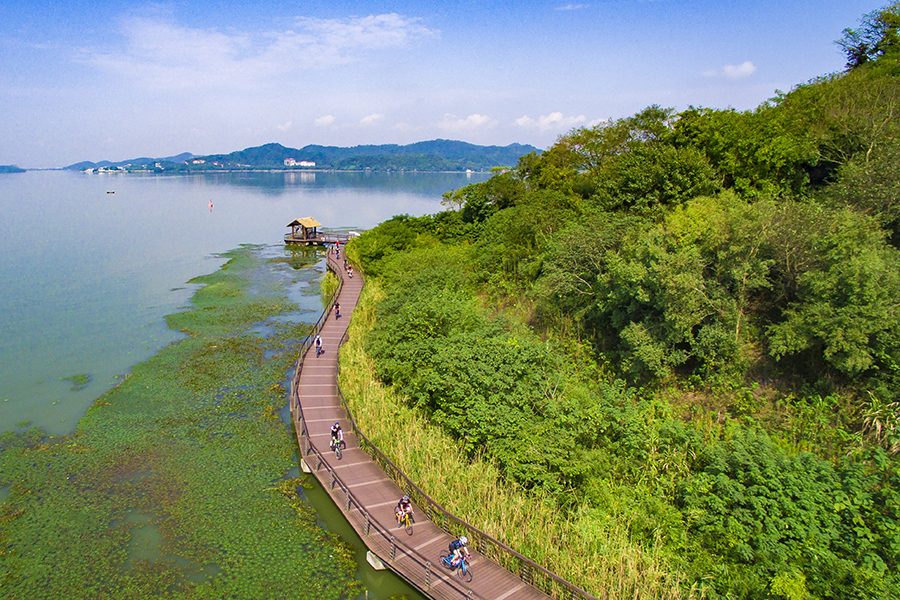
Credit: ViewStock/Getty Images
Idyllic scenic spots
The calm extends farther, more notably to the city’s most beautiful feature, Dongqian Lake. It’s a sprawling, clean body of water; residents say they drink straight from Dongqian when the winds are calm and the water is clear during spring and summer. The pristine lake is much more picturesque and pleasant than Hangzhou’s famous West Lake nowadays, simply because it’s still a hidden gem undiscovered by tourists.
Dongqian Lake is fringed with green hills, quaint fishing villages and modern cycling tracks. Walking paths are clad with unique rock formations and weeping willows, calling to mind a classical Chinese ink wash painting. With this kind of scenery, it’s no wonder that Ningbo was also the birthplace of Chinese landscape painting and poetry.

Credit: Park Hyatt Ningbo Resort and Spa
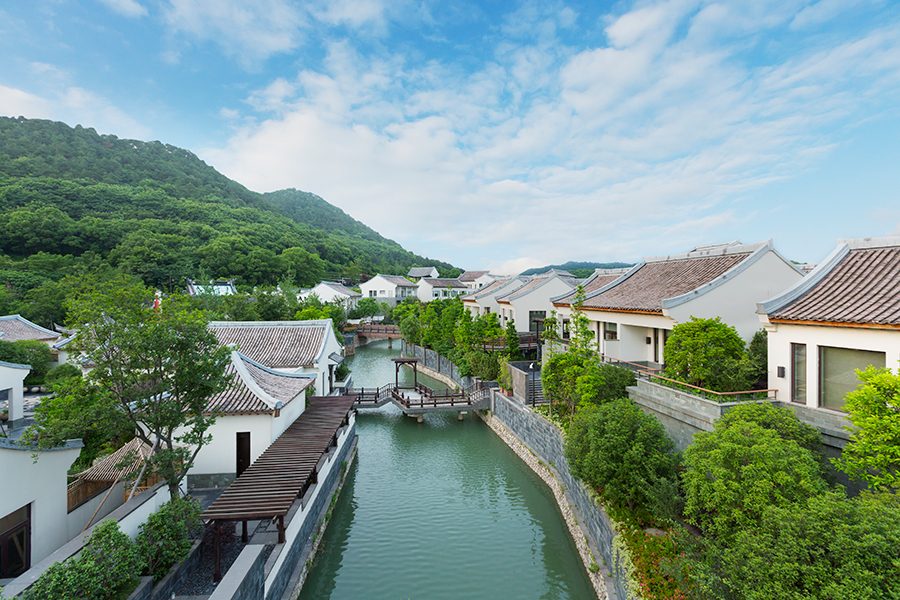
Credit: Park Hyatt Ningbo Resort and Spa
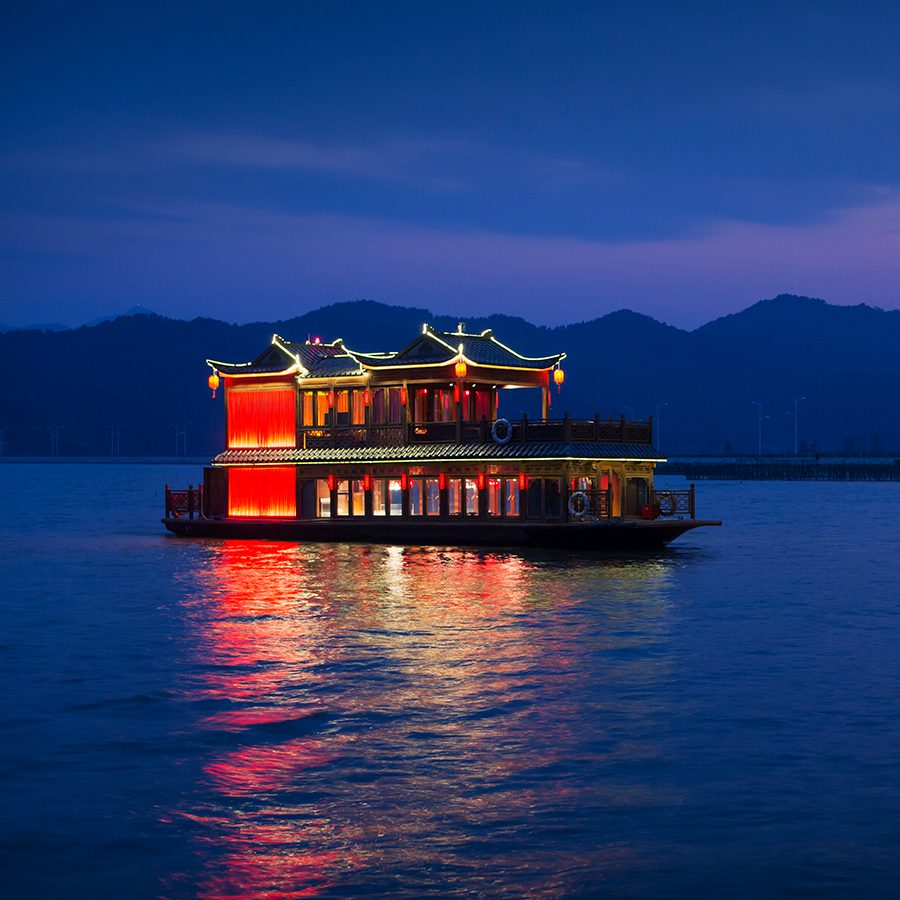
Credit: Park Hyatt Ningbo Resort and Spa
A luxury hotel stay by the lake
The stylish Park Hyatt Ningbo Resort and Spa sits right on the lakeshore. The resort’s lush, well-manicured grounds with simple but sumptuous free-standing villas and beautifully preserved historical buildings are a balm for weekend travellers from Shanghai, Suzhou and Hangzhou, or the well-heeled locals who use the premises as club members.
In the alfresco courtyard of the Tea House, formerly a 500-year-old ancestral hall, guests sip on fine loose-leaf teas and snack on freshly made Ningbo dumplings, famous throughout China. They're made on the spot with rice flour ground by mortar and a healthy dollop of lard, which gives them an eminently velvety texture. The hotel’s dining venues also serve soft, succulent prawns caught from the lake; foodies will be surprised by how much sweetness and unadulterated umami these freshwater critters pack in their little bodies.
Even more impressive is Red, a 700-year-old temple remade into the hotel bar complete with sleek lacquered interiors by Tokyo design firm Super Potato. Kunqu – the oldest existing form of Chinese opera and a Unesco intangible cultural heritage – is performed weekly. The hotel, in some ways, represents both Ningbo’s past and future.

Credit: ViewStock/Getty Images

Credit: SENEZ/Getty Images
Architectural time capsules
Old-meets-new emerges as a recurring theme the more you explore Ningbo – a city, like many in China, aware of its heritage while only recently starting to embrace its future.
No landmark embodies this dichotomy quite like the spectacular Ningbo Museum , designed by Wang Shu, who became the first Chinese citizen to win the Pritzker Architecture Prize in 2012. From a distance, the building appears unashamedly modern: a geometrically hypnotic design that nods to the region’s maritime history and natural valleys, caves and lakes all at the same time.
Look closer, and Wang’s devotion to tradition becomes clearer in the detail: the exterior is decorated with millions of tiles and bricks from old Ningbo houses and the ancient city walls, some of which date back some 1,300 years to the Tang Dynasty. Inside the museum, discover a treasure trove of knowledge on Ningbo history.
Across the city, some of Ningbo’s most significant historic areas are seeing plenty of development as well. The Old Bund, which pre-dates Shanghai’s waterfront concession, has seen its clutch of historic buildings transformed into a collection of bars and karaoke clubs – though still a far cry from the hipster speakeasies and cosmopolitan glamour of Shanghai’s more famous Bund. Even Nantang Old Street, a touristy precinct celebrated for its traditional street architecture and famous snacks (think stinky tofu, Ningbo glutinous rice dumplings and grilled seafood straight from the East China Sea), is seeing its buildings replaced with newer, shinier versions, yet still designed in the old style.
As the promise of increased development comes to Ningbo, and the city takes up an even more important strategic position within the Hangzhou Bay triangle, it also faces the challenge of remaining true to its long-held identity: the home of Zen.
More inspiration
Ningbo travel information
- China – the Chinese Mainland, Hong Kong SAR, Macao SAR and Taiwan Region
- Hong Kong SAR - English
- Chinese Mainland (China) - English
- Taiwan, China - English
- 香港特別行政區 - 繁體中文
- 中国內地 - 简体中文
- 中國台灣 - 繁體中文
- Africa
- South Africa - English
- Asia
- Bangladesh - English
- Korea - English
- Singapore - English
- Cambodia - English
- 한국 - 한국어
- Sri Lanka - English
- India - English
- Malaysia - English
- Thailand - English
- Indonesia - English
- Maldives - English
- ประเทศไทย - ภาษาไทย
- Indonesia - Bahasa Indonesia
- Myanmar - English
- Vietnam - English
- Japan - English
- Nepal - English
- Việt Nam - tiếng Việt
- 日本 - 日本語
- Philippines - English
- Australasia
- Australia - English
- New Zealand - English





